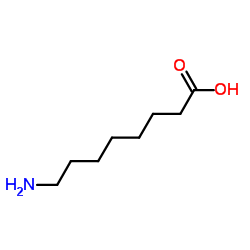Characterization, biodistribution and small-animal SPECT of I-125-labeled c-Met binding peptide in mice bearing c-Met receptor tyrosine kinase-positive tumor xenografts.
Eun-Mi Kim, Eun-Hye Park, Su-Jin Cheong, Chang-Moon Lee, Dong Wook Kim, Hwan-Jeong Jeong, Seok Tae Lim, Myung-Hee Sohn, Kisu Kim, Junho Chung
Index: Nucl. Med. Biol. 36(4) , 371-8, (2009)
Full Text: HTML
Abstract
c-Met is a receptor tyrosine kinase involved in tumor cell growth, invasion, metastases and angiogenesis. Overexpression of c-Met is frequently observed in several tumor types. Here, we report the in vitro cell-binding properties and biodistribution and SPECT/CT imaging in glioma (U87MG) xenograft-bearing mice of (125)I-labeled c-Met-binding peptides (cMBPs) including analogs conjugated to amino acid and aliphatic carbon linkers. In vitro assays showed that the peptide without any linker and those with GGG and 8-aminooctanoic acid linkers had low cellular internalization and that IC(50) values of peptides were 1.5 microM, 65 nM and 85.3 nM, respectively. Biodistribution studies showed the GGG-containing peptide had higher tumor uptake and a higher tumor-to-blood activity concentration ratio than other receptor-binding ligands. SPECT/CT studies with a dedicated small-animal imaging system were performed in U87MG-bearing athymic mice. Although U87MG tumor xenografts could be visualized by SPECT/micro-CT using the various (125)I labeled cMBPs, image contrast and overall quality were unremarkable.
Related Compounds
| Structure | Name/CAS No. | Molecular Formula | Articles |
|---|---|---|---|
 |
8-Aminooctanoic acid
CAS:1002-57-9 |
C8H17NO2 |
|
Structure-activity relationship study on a simple cationic p...
2005-10-20 [J. Med. Chem. 48 , 6741-9, (2005)] |
|
Surface interactions of a homologous series of alpha,omega-a...
1999-01-01 [Biospectroscopy 5(1) , 9-17, (1999)] |
|
Covalent complexes between serum albumin and 7-hydroxycoumar...
1996-11-11 [Biochim. Biophys. Acta 1304(1) , 43-55, (1996)] |
|
In vivo imaging of mesenchymal-epithelial transition factor ...
2009-07-01 [Bioconjug. Chem. 20(7) , 1299-306, (2009)] |
|
NAD+ metabolite levels as a function of vitamins and calorie...
2010-01-01 [BMC Chem. Biol. 10 , 2, (2010)] |